Nestled within the intricate ecosystems of dense reed beds and marshes across Asia and Australia, the Black Bittern, scientifically known as Ixobrychus flavicollis, emerges as a remarkable yet often overlooked avian gem.
Despite its unassuming name, this member of the heron family boasts a subtle palette of dark brown and slate gray hues adorned with delicate streaks of white.
Its mastery of natural camouflage allows it to seamlessly blend into its preferred habitats, evading the gaze of casual observers. However, beyond its cryptic appearance lies a captivating tale of solitude and nocturnal prowess
Join me as we delve into the intriguing world of the Black Bittern, unraveling its secrets and marveling at the wonders of nature’s design.
Habitat of the Black Bittern
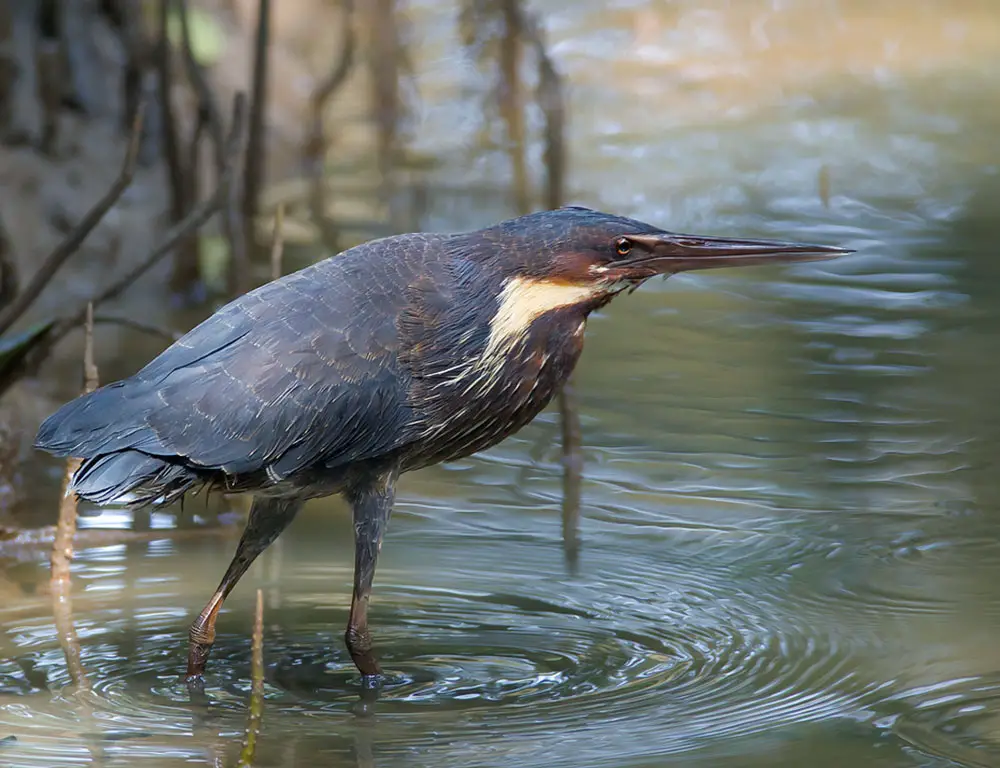
The Black Bittern, scientifically known as Ixobrychus flavicollis, is primarily found in the wetlands of Asia and Australia. These birds prefer habitats with dense undergrowth, such as lush mangroves, reed beds, swamps, and rice fields.
Here’s a breakdown of their habitat preferences:
Breeding Season
During the breeding season, typically from May to July, Black Bitterns are commonly found nesting in countries like India, China, Japan, and Indonesia.
These regions provide suitable environments for raising their young, with abundant vegetation and wetland areas.
Australian Territories
In Australia, Black Bitterns are prevalent in northern parts, particularly in Queensland and the Northern Territory. They are sometimes called “Black Birds” in Australia due to their dark plumage.
Migration
Some populations of Black Bitterns migrate southwards during colder months, seeking milder climates. They often temporarily dwell in places like Southeast Asia until the arrival of spring in their breeding grounds.
Habitat Preferences
Black Bitterns exhibit selective habitat preferences, favoring freshwater or brackish environments over saltwater habitats for nesting. Their nests are typically built close to water bodies among thick vegetation, providing them ample protection from predators.
Physical Characteristics of the Black Bittern
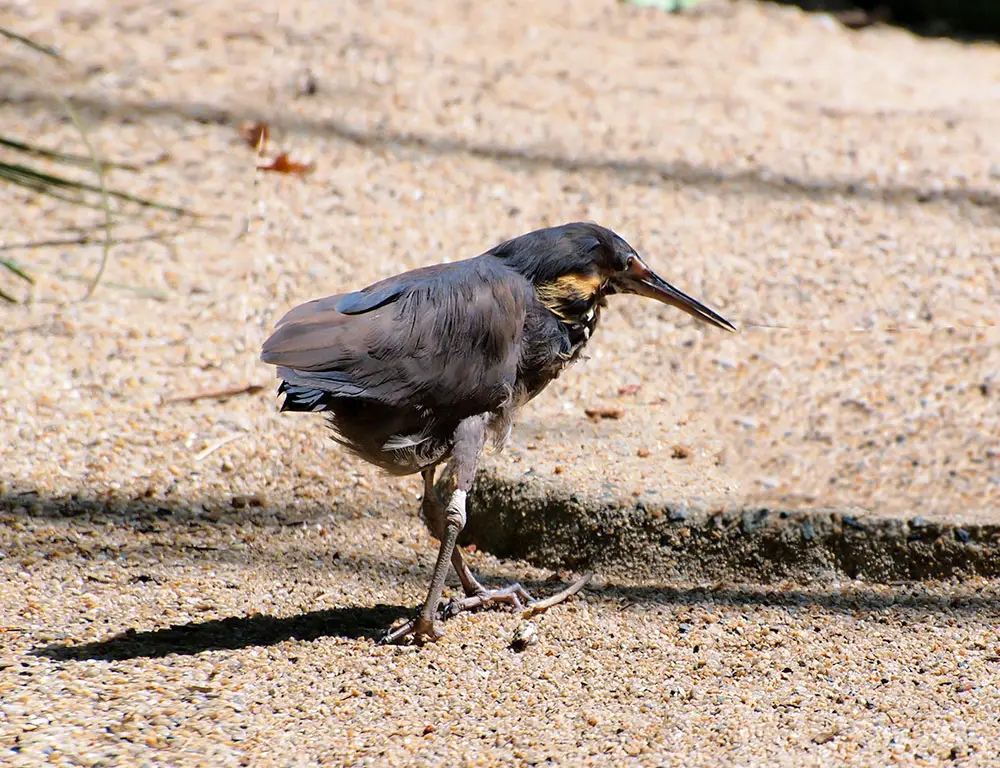
The physical characteristics of the Black Bittern indeed make it a striking and captivating bird species. Let’s delve deeper into its unique features:
Coloration
The Black Bittern boasts a rich, glossy black plumage that shines in the sunlight, lending it a visually stunning appearance. Its wings exhibit streaks of varying shades of brown, adding depth to its color palette.
The underside is adorned with faint white spots, enhancing its aesthetic appeal.
Body Structure
Characterized by a lean and elongated body, the Black Bittern stands out. With a length ranging from 22 to 24 inches (56 to 61 cm), it possesses a sleek and streamlined silhouette that aids in moving through dense vegetation.
Sexual Dimorphism
While adult males tend to be slightly larger than females, the overall size difference between the genders is minimal, with both sexes sharing similar physical attributes.
Beak and Legs
The Black Bittern’s beak is a notable feature, characterized by its sharp, dagger-like shape and vibrant yellow coloration. This specialized tool is adeptly used for capturing prey with precision.
Its long, slender legs, tinted in a greenish-yellow hue, provide the bird with the agility and stealth required to navigate wetland environments while hunting.
Eyes
Sporting piercing yellow eyes, the Black Bittern possesses excellent night vision, a crucial adaptation for its nocturnal hunting habits. These keen eyesight abilities enable it to effectively locate and capture prey under the cover of darkness.
Behavior and Diet of the Black Bittern
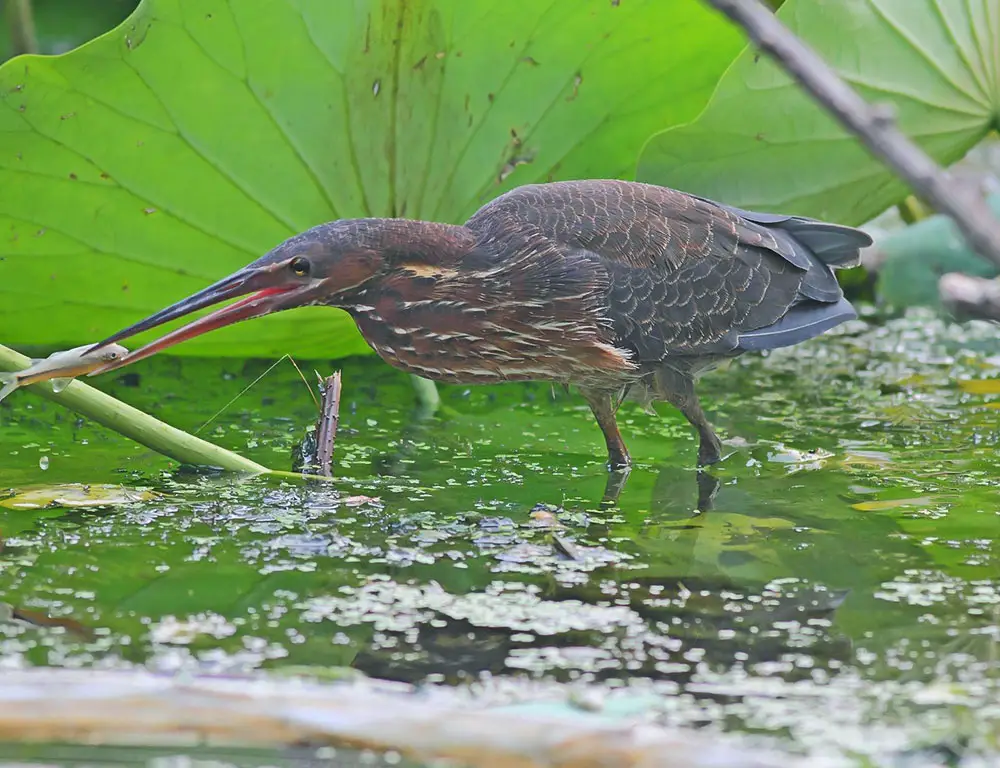
The behavior and diet of the Black Bittern offer fascinating insights into the life of this solitary and nocturnal bird:
Nocturnal Behavior
Black Bitterns are primarily nocturnal, spending their days concealed among dense vegetation near water bodies. When threatened, they employ a ‘freeze’ stance to blend in with their surroundings.
Hunting Strategy
They often perch quietly on branches overhanging water, patiently waiting for prey to approach. When an opportunity arises, they swiftly lunge forward to capture fish, insects, amphibians, crustaceans, and occasionally small mammals or reptiles.
Diet
The typical menu for a Black Bittern consists of fish, insects, amphibians, and crustaceans. However, they display adaptability by occasionally consuming small mammals or reptiles.
Breeding Behavior
Black Bitterns are observed nesting in trees or shrubs close to freshwater habitats. Their nests are simple yet effective platforms constructed from sticks and twigs and lined with leaves. During the breeding season, females lay 3–5 eggs, which both parents take turns incubating.
Breeding and Nesting Habits of Black Bitterns
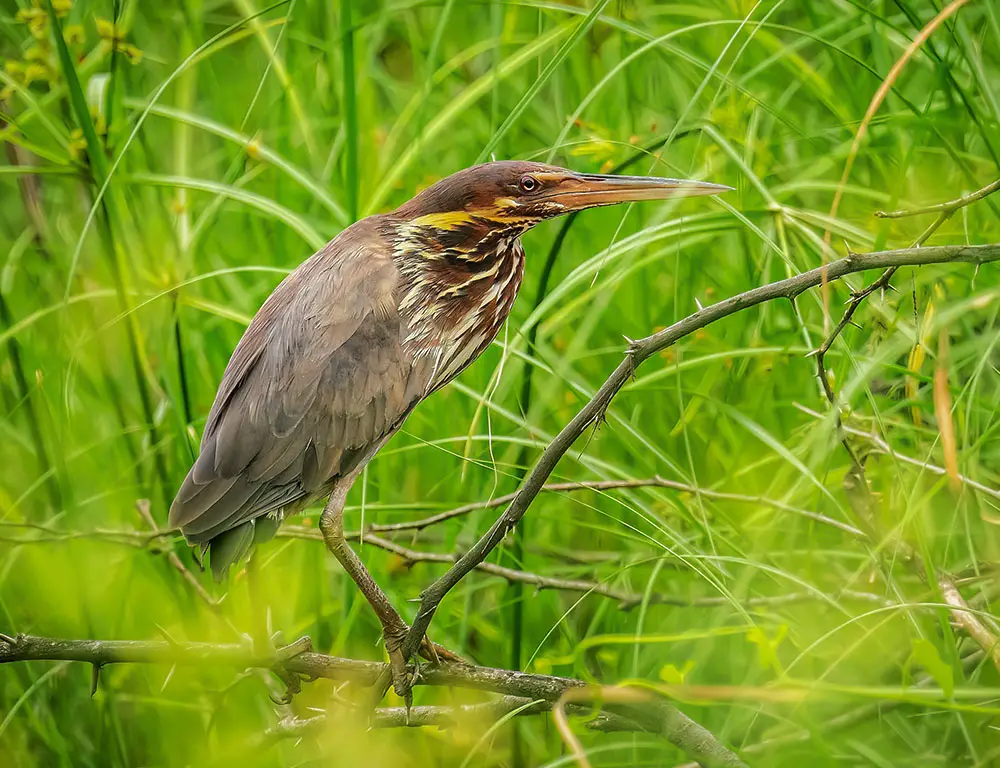
The breeding and nesting habits of black bitterns, scientifically known as Ixobrychus flavicollis, indeed present a captivating aspect of avian behavior.
Let’s delve further into the details:
Monogamous Behavior
Black bitterns form monogamous pairs, establishing bonds that typically last for life. This trait underscores the significance of partner fidelity in their breeding strategy.
Breeding Season
The breeding season for black bitterns spans from April to July, a period marked by increased activity as they prepare for reproduction.
Nest Construction
During this breeding season, black bitterns diligently construct their nests, opting for locations amidst reed beds or bushes. The nests are rudimentary, primarily comprising a platform fashioned from locally available plant materials.
Division of Labor
Interestingly, the female takes on the primary responsibility for nest-building and incubation. Meanwhile, the male assumes the role of sentinel, standing guard over the nest to ensure its protection from potential threats.
Egg Laying and Incubation
The female typically lays a clutch of 3 to 5 eggs, which she then incubates for approximately 18 days. This period requires dedication as she remains steadfast on the nest, maintaining optimal conditions for the development of the embryos.
Parental Care
Upon hatching, the black bittern chicks remain in the nest for about three weeks, gradually acclimating to the outside world under the watchful eyes of their parents. Both parents actively participate in feeding duties, ensuring the nourishment and well-being of their offspring.
Developmental Milestones
The developmental stages of black bittern chicks unfold progressively:
- First week: The chicks largely depend on parental care, relying on them for sustenance and warmth.
- Second week: They begin to explore the area surrounding the nest, gradually gaining independence.
- Third week: Flight becomes a viable option as the chicks develop their wings, enabling them to embark on short flights, marking a crucial milestone in their journey to adulthood.
Conservation Status of the Black Bittern
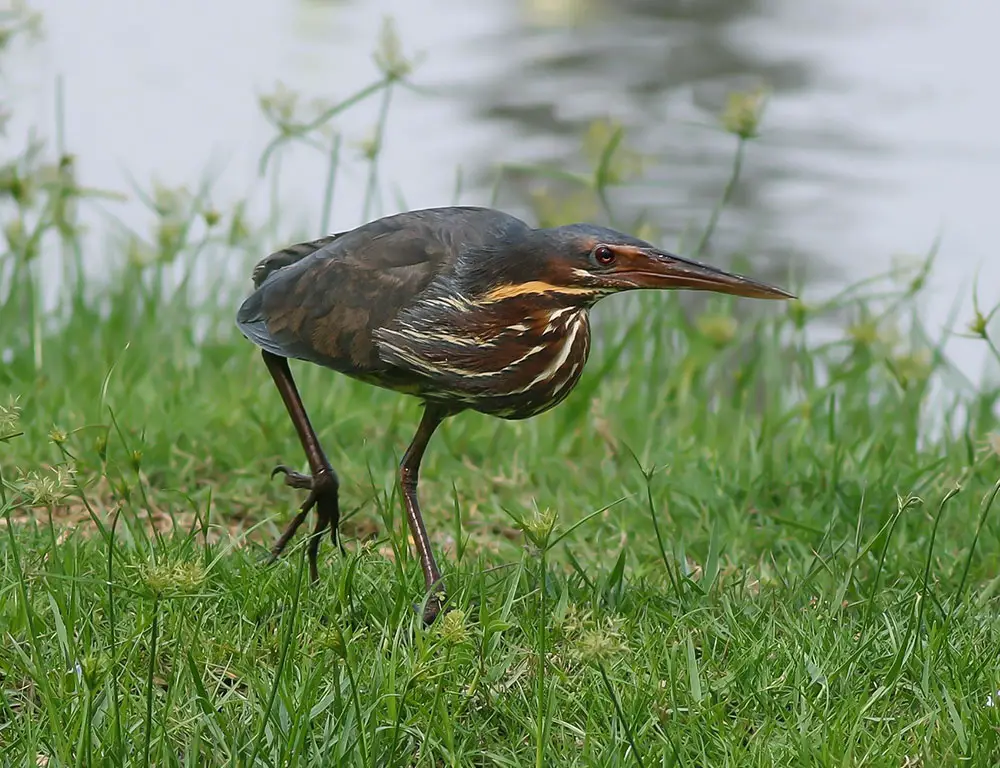
The conservation status of the Black Bittern, currently classified as ‘Least Concern’ by the International Union for Conservation of Nature (IUCN), is influenced by several factors:
Large Range
The Black Bittern benefits from a widespread distribution across various regions in Asia and Australia. This expansive range contributes to the stability of its population as it ensures a diverse array of habitats for the species.
Population Estimates
Despite its broad distribution, estimating the exact population numbers of Black Bitterns remains challenging due to their secretive nature and elusive behavior.
The lack of precise population data complicates conservation efforts but suggests that the species is not currently facing imminent threats of extinction.
Habitat Loss
One of the primary concerns affecting Black Bittern populations is the loss of wetland habitats, primarily due to human activities such as agriculture and urban development.
The draining of wetlands diminishes crucial nesting and feeding grounds for the species, posing a significant threat to its long-term survival.
Climate Change
Climate change exacerbates the challenges faced by Black Bitterns, particularly through rising sea levels that can lead to the erosion of coastal wetlands, further reducing available habitat for the species.
Conservation Measures
Several countries, including India and Australia, have implemented protective measures to safeguard Black Bittern populations.
These include legal protections under wildlife protection acts and conservation legislation, offering some degree of protection against hunting and trading threats.
Conclusion
The Black Bittern emerges as a captivating avian species, shrouded in mystery and with remarkable adaptations. Its affinity for wetlands and mangrove habitats, adept camouflage, and unique hunting techniques contribute to its enigmatic allure.
While currently classified as ‘Least Concern’ regarding conservation status, the ongoing destruction of wetland ecosystems underscores the importance of continued conservation efforts.
By remaining vigilant and proactive in preserving its natural habitats, we can ensure the continued presence of this elusive bird in our ecosystems.
So, next time you find yourself near marshy terrain, keep a keen eye out for the Black Bittern, a testament to nature’s ingenuity and resilience.